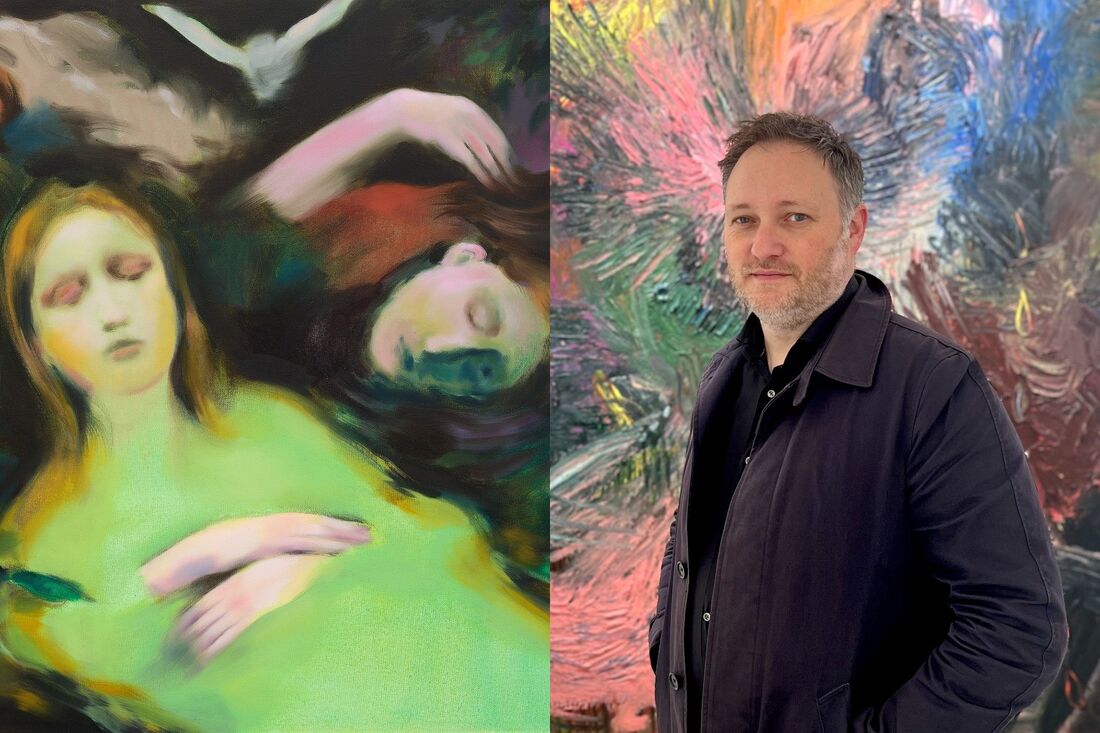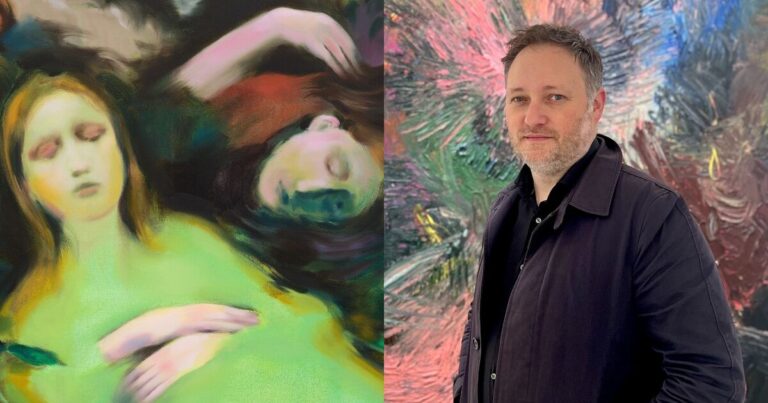
In 2005, Miles Thurlow and Paul Moss opened Workplace’s first brick-and-mortar gallery at a cost of just £1 a year. After three years of working together on an artist-led curatorial project, they settled on a small space at Gateshead Indoor Market in North East England. This unconventional setup came with a community-focused exchange: In exchange for the affordable space, they would judge the market’s annual Christmas card contest, which includes artwork by children from surrounding schools. This approach not only secured the duo a physical space, but also embedded the gallery in their local environment. Thurlow and Moss also envisioned Workplace as a space to counter the mainstream art world’s tendency to focus exclusively on established artists.
“There was the feeling that we were outside the center and that the activity that took place in the museums and galleries that surrounded us at the time consisted of showing artists who were already known, already validated, almost always based in London. …But if you were living and working as an artist outside of the center, you would somehow be excluded,” Thurlow told Artsy. Although Workplace has grown into a larger commercial gallery, with two spaces in London and Newcastle, this DIY spirit continues to shape its approach. “There’s always been this do-it-yourself attitude that we’ve had: if you’re not in the center, you’ve got to make it around you wherever you are, and we’ve taken that with us,” he added.
An early and formative experience for gallerists came with Thurlow’s first experience at an art fair, the London Art Fair in 2003, before they opened their physical gallery. So Thurlow and Moss approached Paul Hedge, the co-founder of London’s Hales Gallery, who was on the selection committee at the time, with prints of their friends and colleagues’ artwork. They managed to get a place at the fair.
“We were very nervous about being dismissed as parochial or provincial, but we realized that an art fair booth can be a great leveler,” Thurlow said. “We very quickly placed work with important national public collections and large corporate collections, who bought works from us. It was a real ‘lights out’ moment when suddenly these artists, who were completely unknown even within their own city, were now in these collections really important international… It was a real awakening to the power of the art market and the way in which it can validate the practice of an artist”.
Workplace’s artist-first approach is reflected in its long-standing relationship with British painter Laura Lancaster. The partnership began with an exhibition in 2005, which opened the gallery’s Gateshead space and sparked his working relationship with the artist. The connection has become a model for Workplace programming, where collaborations are viewed with a long-term ambition in mind.
“With every artist we work with, we aim to find out what makes them successful,” Thurlow said. “How do we place this artist’s work in an institutional context? How can we build their careers? How can we develop partnerships internationally for the artist? The origins of the gallery are very artist-centric. I was an artist, Paul was an artist… There’s an intuitive understanding of what it is to be an artist and what you need, and that’s not just financial, and it’s not just glitz and glamour. There is a critical economy surrounding your practice and you need to develop strong roots in your practice. The endurance of the artist’s practice is as important to us as the endurance of the gallery; in many ways, it’s the same.”
In 2013, Thurlow and Moss introduced a London space, establishing a network between the North East art scene and the capital of the United Kingdom. The two ran the galleries together, cultivating a dynamic roster of artists such as interdisciplinary artist Marcus Coates and British photographer Matt Stokes until Moss passed away in 2019. In the face of tragedy, Thurlow had to approach the gallery again and, in 2020, moved permanently to Gateshead. flagship to London. The gallery then moved to its current space on Mortimer Street in Fitzrovia, London. In 2023, Thurlow returned to the North East to open a second gallery in Newcastle, and today Thurlow looks forward with a community-based lens.
Today, Workplace has become an internationally known gallery, participating in Art Cologne, Art Basel Hong Kong and Art SG, among other fairs. But as the gallery grew, Thurlow and Moss never left their DIY roots behind. Gallerists launched the Workplace Foundation in 2017 to focus on encouraging artists outside of mainstream gallery scenes. In Thurlow’s words, “If you’re outside of London, access to the art world is limited,” and so the foundation connects “emerging grassroots artists in a more institutional position.”
Above all, the initiative is a project dedicated to fostering the practice of an artist. By various accounts, project artists such as Simeon Barclay have worked with Workplace to put on shows. Meanwhile, the project also supports artistic practices of various media. For example, painter Rachel Lancaster first worked with the foundation as a musician.
As well as nurturing local talent and working with UK arts communities, Workplace has extended its community-building ethos globally. The gallery works with Philadelphia-based painter Olivia Jia, who first presented at the gallery last year with “Ex Libris,” and recently hosted an online exhibit with Chicago artist Cathleen Clarke. Both Clarke and Jia exhibit with New Yorker Margot Samel, underscoring the constructive relationship between the galleries cultivated through these artists. For Thurlow, these gallery relationships are essential not only to the gallery itself but also to the artists.
The evolution of the workplace illustrates a journey marked by risk, innovation and resilience. But more than anything, the gallery defended the importance of community building and the support of artists. Thurlow compares it to a “tightrope walk down a ravine with crocodiles underneath, and you’re juggling at the same time.”
“There are moments of real fear but also moments of great success,” he said.

